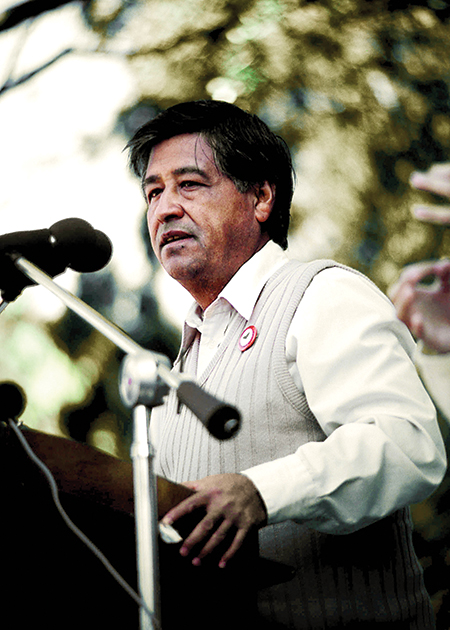Sierra & Tierra?: A Recognition to Cesar Chavez
admin | Dec 17, 2012 | Comments 0

When Cesar Chavez died in his sleep — the same way he lived, peacefully — he left us a dream of justice that is yet to be realized. He also left us a legacy of courage, compassion and humility that has inspired millions to keep fighting for his ideals and to enrich his monumental work.
And today, the places where this giant of modest height lived and worked have become a national monument to the immense significance of his life and the wonderful example of an existence devoted to do as much good for the rest of humanity as possible.
Twelve years after his passing, justice has finally been done. President Obama has designated as Cesar Chavez National Monument the property in Keene, CA, where he spent his most intense and fruitful years.
“It’s a story of natural wonder and modern marvels. Of fierce battles and quiet progress,” said President Obama during the dedication of the monument in Chavez’s property, called Our Lady Queen of Peace. “But it’s also a story of people, of determined, fearless, hopeful people who have always been willing to devote their lives to making this country a little more just and a little more free.”
The monument encompasses several parts of the property, including his office; the legal offices of the United Farmworkers Union, which he founded along with Dolores Huerta; the home of Cesar and his wife, Helen, and the garden that contains his tomb.
The President said Chavez “gave a voice to poor and disenfranchised workers everywhere.” And even though his civil rights legacy is best known, his work in favor of environmental justice and recognizing the inseparable link between humans and nature possesses an undeniable historical value.
Chavez witnessed first hand the tragic and silent bombardment of toxics to which farm workers where subject — tons upon tons of pesticides and fertilizers that poisoned not only those who toiled in the fields, but also their families waiting for them at home.
In 1984, Chavez started one of his most relevant peaceful protests, the table grapes boycott in McFarland, CA, then known as “cancer town,” because of its childhood cancer clusters caused by pesticides and fertilizers. The poisons came from drinking water tainted with the very chemicals used to douse the crops.
Yet it’s not only the farm workers but also all the country’s consumers who owe a debt of gratitude to this great man and Huerta. Together, and through peaceful resistance, they managed to either ban or restrict the use of some of the most lethal chemicals ever created by humans, including pesticides such as DDT, Aldrin, methyl bromide, Parathion and Captan.
In 1988, outraged at the undue influence of the pesticide and fertilizer industries, he began a devastating hunger strike that lasted 36 days, drinking only water. The “Fast for Life,” which was supported by several celebrity activists, cost him 30 pounds and the weakening of his already frail body.
But it also triggered a flood of scientific research that revealed the terrible dangers of pesticides, including the development of Parkinson’s disease.
The establishment of the Cesar Chavez National Monument is great news. Yet the monument that should really matter is the one we all should dedicate to him in our hearts.
Javier Sierra is a Sierra Club columnist. Follow him on Twitter @javier_sc.ecocentro@sierraclub.org
Filed Under: The latest
About the Author:





